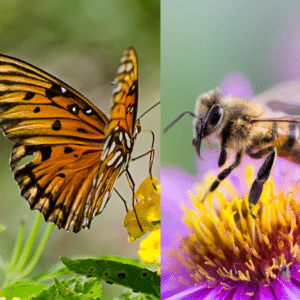Ontario Passes Regulations to Protect Pollinators
By Kristina Jackson on imidacloprid in Canada [use has been proven to kill bees, butterflies, earthworms and a variety of other insects] – Originally Published June 19, 2015
This month Ontario passed the first North American regulations on neonicotinoid pesticides that are tied to pollinator loss. “Neonics”, as they are often called, are a synthetic pesticide first created in the 1980’s and quickly expanded to become the most common pesticide used on crops worldwide. Neonics mimic naturally occurring insect repellants found in nicotine but the frequency and intensity of current use has been proven to kill bees, butterflies, earthworms and a variety of other insects.
Find out more about our work to protect nature and issues like imidacloprid in Canada
- Take action now to protect nature from things like pesticides.
- Sign up for email updates on our homepage.
- Find out more about Sierra Club Canada’s work to protect biodiversity, nature, and endangered species.
In December 2013 the European Union put a ban on the sale of the same three neonic pesticides now regulated by Ontario (clothianidin, imidacloprid and thiametoxam). Much has been discussed in North America as the precipitous decline of monarch butterfly populations and honey bees have been linked to neonic use but until now no governmental agency in North America had taken decisive action.
 According to Ontario government, “In Ontario, there is widespread use of neonicotinoid-coated seeds, in some cases, without evidence of pest problems. Close to 100 per cent of corn seed and 60 per cent of soybean seed sold in the province are treated with neonicotinoid insecticides.” Most troubling about neonics are their persistence (taking a long time to break down into non-toxic components) and the fact they are water soluble leading to them being carried by rain and water off the fields into natural areas and waterways.
According to Ontario government, “In Ontario, there is widespread use of neonicotinoid-coated seeds, in some cases, without evidence of pest problems. Close to 100 per cent of corn seed and 60 per cent of soybean seed sold in the province are treated with neonicotinoid insecticides.” Most troubling about neonics are their persistence (taking a long time to break down into non-toxic components) and the fact they are water soluble leading to them being carried by rain and water off the fields into natural areas and waterways.
Controlled studies show bees exposed to small amounts of neonicotinoids become disoriented and cannot feed themselves. Bees exposed to larger amounts will die within 48 hours, unfortunately they often have time to return to their hive with small amounts of pesticide on their body potentially infecting other individuals. Runoff containing neonics is found in wetlands and waterways and may be decreasing populations of aquatic insects an important source of food for many birds. More detail on the environmental effects of neonics can be found in this CBC Quirks & Quarks blog.
The Ontario regulations going into effect July 1, 2015 are intended to decrease use in the Province by 80% by 2017. The regulations require training in order to purchase the pesticide or treated seeds. Training farmers in integrated pest management is intended help to protect pollinators and focus pesticide application to where and when it is truly needed. The regulation also establishes methods that farmers can use to assess whether pest problems require the use of neonicotinoid-treated seeds, sets out requirements for the sale and use of neonicotinoid-treated seeds and tracks the sale of the seeds.
An Ontario produced backgrounder on the issues and new regulation.
[Re published as a flash-back to the past]
